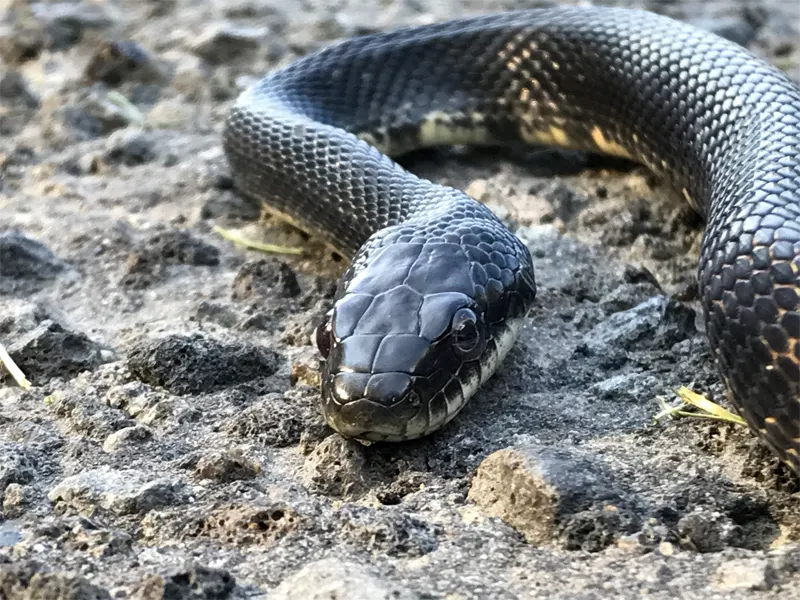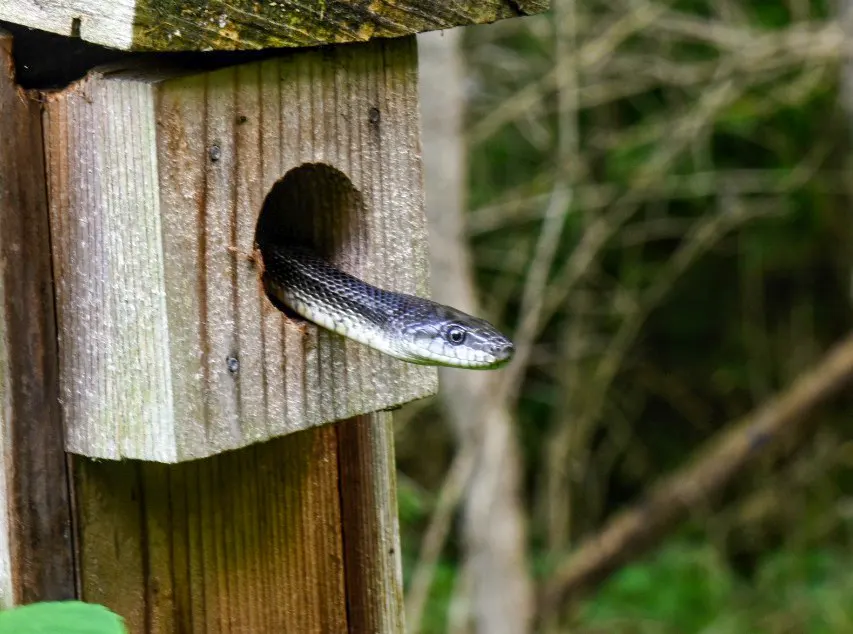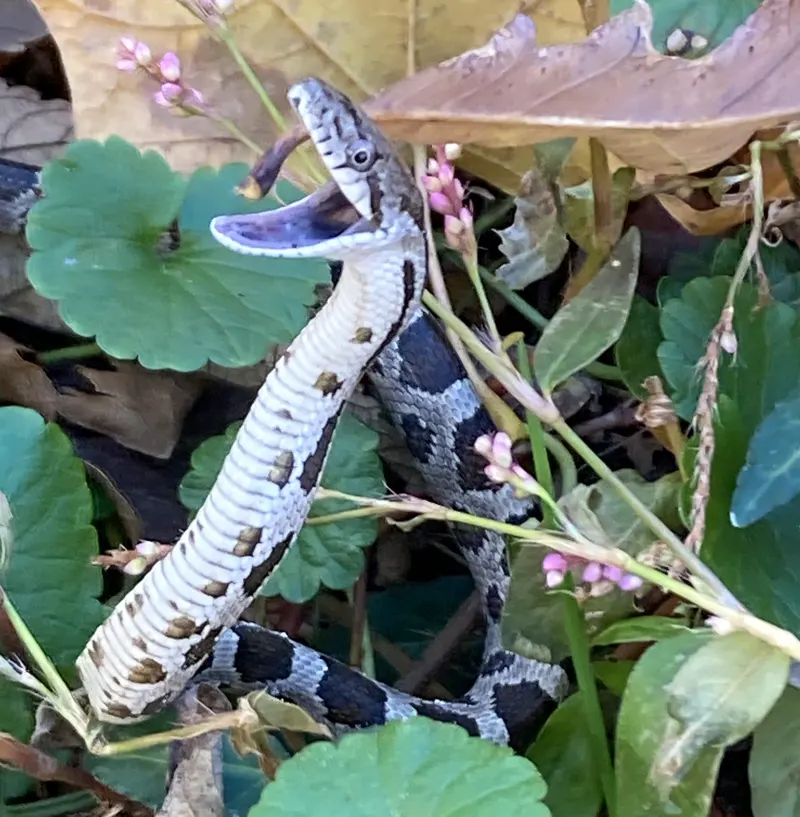
- Scientific Name
- Pantherophis spiloides
- Range
- Western Virginia
- Also Called
- Gray Rat Snake, Midlands Ratsnake
- Venomous
- No
- Features
- Gray With With Dark Blotches Checkerboard Color on Bottom of Tail
- Prey
- Small Mammals, Birds, Eggs
- Litter Size
- 5 - 27 Eggs per Birth
- Life Span
- 10 - 15 Years
- Length
- 3 - 6 Feet
Quick Links for Gray Ratsnake
Gray Ratsnake Description
Gray Ratsnake Appearance
Size
This snake is normally between 3 to 6 feet long, the longest ever recorded is about 8.10 feet in Tennessee.
Juveniles tend to be more than 6 – 8 inches long.
Gray Ratsnake Behavior
These snakes prefer to be on the ground, but they are great climbers, and can be seen on the branches of trees. These snakes are Diurnal or, they prefer to be out in the day. However, during the warm months, this snake becomes active at night due to the heat.
These snakes are solitary creatures and only show up with other snakes during hibernation or when mating.
When threatened, this snake will freeze and moves it’s body in waves. If approached this snake will bluff a strike, and if handled, this snake will bite.
It is illegal in Virginia to keep Wild Snakes as pets
Range and Habitat of The Gray Ratsnake
Range
These snakes can be found in western Virginia, rarely venturing past the Appalachians.
In the rest of the United States, they can be found all over the eastern half of the country. They do not go past the Appalachians, or West of the Mississippi river. They can be found as far north as Ottawa Canada.
Habitat
This snake is an Agile climber and can be seen on the ground or up in the trees. They particularly like to climb pine trees, but can also be seen near streams, farms, barns, and suburban areas. They can also be found near yard debris such as woodpiles, leaf piles, hallow trees, and old houses.
Diet
They like to eat small mammals and birds, however if opportunity arises, they will also eat bird eggs. This snake kills prey by constriction.
Reproduction and Young
Reproduction
Mating for these snakes occurs in the Spring, and sometimes the Fall. And then will lay their eggs in the summer. They typically lay between 5 – 27 eggs



